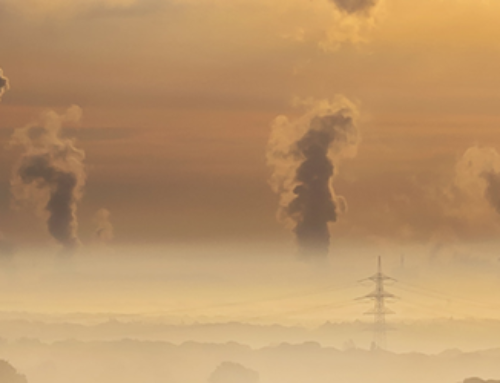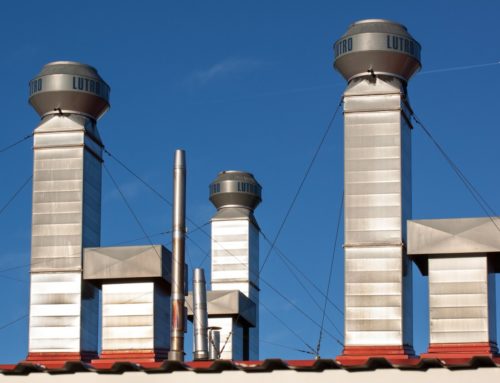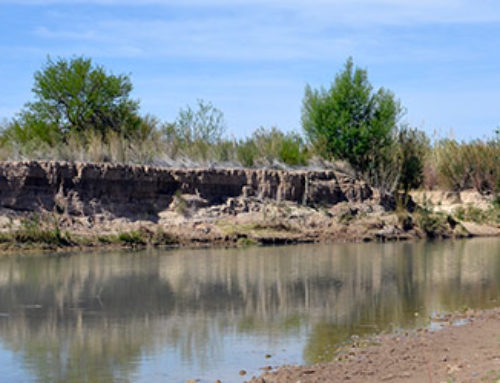Air pollution occurs when harmful or excessive quantities of substances including gases, particulates, and biological molecules are introduced into Earth’s atmosphere.
It may cause diseases, allergies and also death of humans; it may also cause harm to other living organisms such as animals and food crops, and may damage the natural or built environment. Human activity and natural processes can both generate air pollution.
Air Pollutants
An air pollutant is a material in the air that can have adverse effects on humans and the ecosystem. The substance can be solid particles, liquid droplets, or gases. A pollutant can be of natural origin or man-made. Pollutants are classified as primary or secondary.
Primary pollutants are usually produced from a process, such as ash from a volcanic eruption. Other examples include carbon monoxide gas from motor vehicle exhaust, or the sulphur dioxide released from factories.
Secondary pollutants are not emitted directly. Rather, they form in the air when primary pollutants react or interact. Ground level ozone is a prominent example of a secondary pollutant. Some pollutants may be both primary and secondary: they are both emitted directly and formed from other primary pollutants.
Substances which causes air pollution:
- Carbon dioxide (CO2) – Because of its role as a greenhouse gas it has been described as “the leading pollutant”. Carbon dioxide is a natural component of the atmosphere, essential for plant life and given off by the human respiratory system. CO2 currently forms about 410 parts per million (ppm) of earth’s atmosphere, compared to about 280 ppm in pre-industrial times, and billions of metric tons of CO2 are emitted annually by burning of fossil fuels. CO2 increase in earth’s atmosphere has been accelerating.
- Sulphur oxides (SOx) – particularly sulfur dioxide, a chemical compound with the formula SO2. SO2 is produced by volcanoes and in various industrial processes. Coal and petroleum often contain sulphur compounds, and their combustion generates sulphur dioxide. Further oxidation of SO2, usually in the presence of a catalyst such as NO2, forms H2SO4, and thus acid rain. This is one of the causes for concern over the environmental impact of the use of these fuels as power sources.
- Nitrogen oxides (NOx) – Nitrogen oxides, particularly nitrogen dioxide, are expelled from high temperature combustion, and are also produced during thunderstorms by electric discharge. They can be seen as a brown haze dome above or a plume downwind of cities. Nitrogen dioxide is a chemical compound with the formula NO2. It is one of several nitrogen oxides. One of the most prominent air pollutants, this reddish-brown toxic gas has a characteristic sharp, biting odor.
- Carbon monoxide (CO) – CO is a colorless, odorless, toxic yet non-irritating gas. It is a product of combustion of fuel such as natural gas, coal or wood. Vehicular exhaust contributes to the majority of carbon monoxide let into our atmosphere. It creates a smog type formation in the air that has been linked to many lung diseases and disruptions to the natural environment and animals. In 2013, more than half of the carbon monoxide emitted into our atmosphere was from vehicle traffic and burning one gallon of gas will often emit over 20 pounds of carbon monoxide into the air.
- Volatile organic compounds (VOC) – VOCs are a well-known outdoor air pollutant. They are categorized as either methane (CH4) or non-methane (NMVOCs). Methane is an extremely efficient greenhouse gas which contributes to enhanced global warming. Other hydrocarbon VOCs are also significant greenhouse gases because of their role in creating ozone and prolonging the life of methane in the atmosphere. This effect varies depending on local air quality. The aromatic NMVOCs benzene, toluene and xylene are suspected carcinogens and may lead to leukemia with prolonged exposure. 1,3-butadiene is another dangerous compound often associated with industrial use.
- Particulates, alternatively referred to as particulate matter (PM), atmospheric particulate matter, or fine particles, are tiny particles of solid or liquid suspended in a gas. In contrast, aerosol refers to combined particles and gas. Some particulates occur naturally, originating from volcanoes, dust storms, forest and grassland fires, living vegetation, and sea spray. Human activities, such as the burning of fossil fuels in vehicles, power plants and various industrial processes also generate significant amounts of aerosols. Averaged worldwide, anthropogenic aerosols—those made by human activities—currently account for approximately 10 percent of our atmosphere. Increased levels of fine particles in the air are linked to health hazards such as heart disease, altered lung function and lung cancer. Particulates are related to respiratory infections and can be particularly harmful to those already suffering from conditions like asthma.
- Persistent free radicals connected to airborne fine particles are linked to cardiopulmonary disease.
- Toxic metals, such as lead and mercury, especially their compounds.
- Chlorofluorocarbons (CFCs) – harmful to the ozone layer; emitted from products are currently banned from use. These are gases which are released from air conditioners, refrigerators, aerosol sprays, etc. On release into the air, CFCs rise to the stratosphere. Here they come in contact with other gases and damage the ozone layer. This allows harmful ultraviolet rays to reach the earth’s surface. This can lead to skin cancer, eye disease and can even cause damage to plants.
- Ammonia (NH3) – emitted from agricultural processes. Ammonia is a compound with the formula NH3. It is normally encountered as a gas with a characteristic pungent odor. Ammonia contributes significantly to the nutritional needs of terrestrial organisms by serving as a precursor to foodstuffs and fertilizers. Ammonia, either directly or indirectly, is also a building block for the synthesis of many pharmaceuticals. Although in wide use, ammonia is both caustic and hazardous. In the atmosphere, ammonia reacts with oxides of nitrogen and sulfur to form secondary particles.
- Odours — such as from garbage, sewage, and industrial processes
- Radioactive pollutants – produced by nuclear explosions, nuclear events, war explosives, and natural processes such as the radioactive decay of radon.
Secondary pollutants include:
- Particulates created from gaseous primary pollutants and compounds in photochemical smog. Smog is a kind of air pollution. Classic smog results from large amounts of coal burning in an area caused by a mixture of smoke and sulfur dioxide. Modern smog does not usually come from coal but from vehicular and industrial emissions that are acted on in the atmosphere by ultraviolet light from the sun to form secondary pollutants that also combine with the primary emissions to form photochemical smog.
- Ground level ozone (O3) formed from NOx and VOCs. Ozone (O3) is a key constituent of the troposphere. It is also an important constituent of certain regions of the stratosphere commonly known as the Ozone layer. Photochemical and chemical reactions involving it drive many of the chemical processes that occur in the atmosphere by day and by night. At abnormally high concentrations brought about by human activities (largely the combustion of fossil fuel), it is a pollutant, and a constituent of smog.
- Peroxyacetyl nitrate (C2H3NO5) – similarly formed from NOx and VOCs.
Minor air pollutants include:
- A large number of minor hazardous air pollutants. Some of these are regulated in USA under the Clean Air Act and in Europe under the Air Framework Directive
- A variety of persistent organic pollutants, which can attach to particulates
Persistent organic pollutants (POPs) are organic compounds that are resistant to environmental degradation through chemical, biological, and photolytic processes. Because of this, they have been observed to persist in the environment, to be capable of long-range transport, bioaccumulate in human and animal tissue, biomagnify in food chains, and to have potentially significant impacts on human health and the environment.
Further reading:
- Air pollution control equipment
- Air Pollution: Measurement, Modelling and Mitigation, Fourth Edition
Source: Wikipedia





